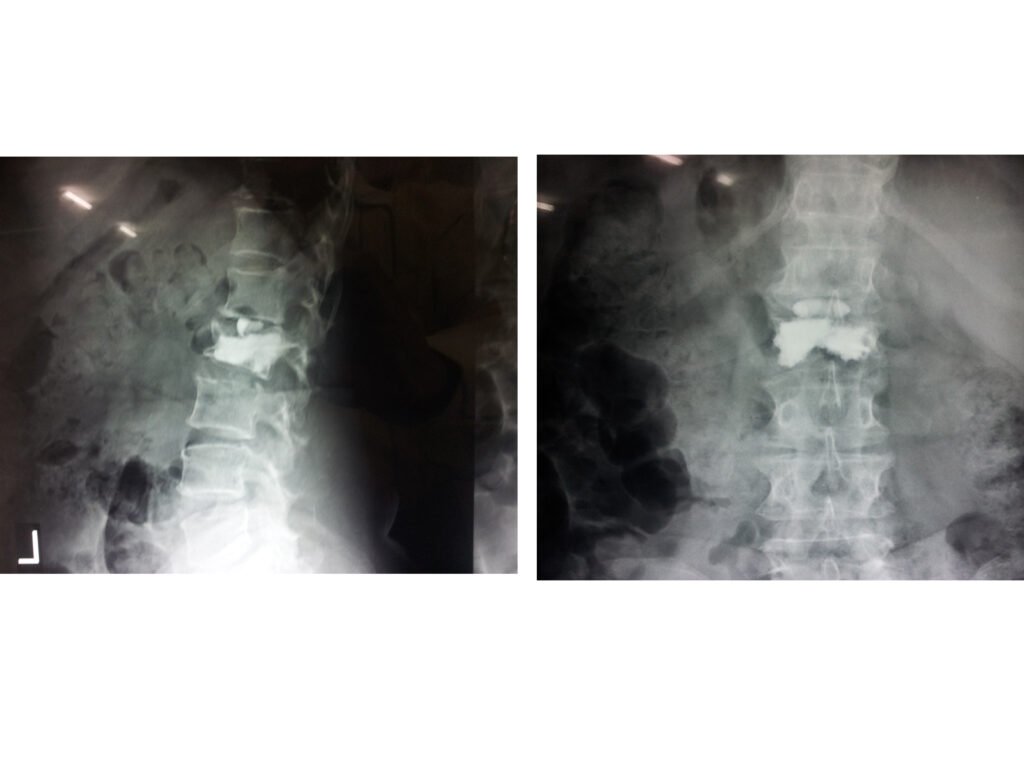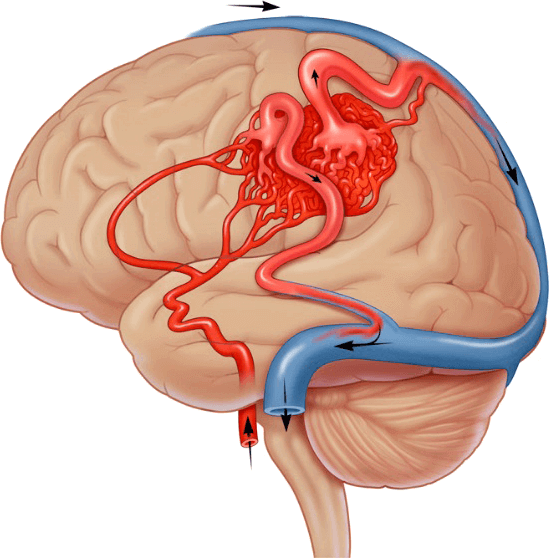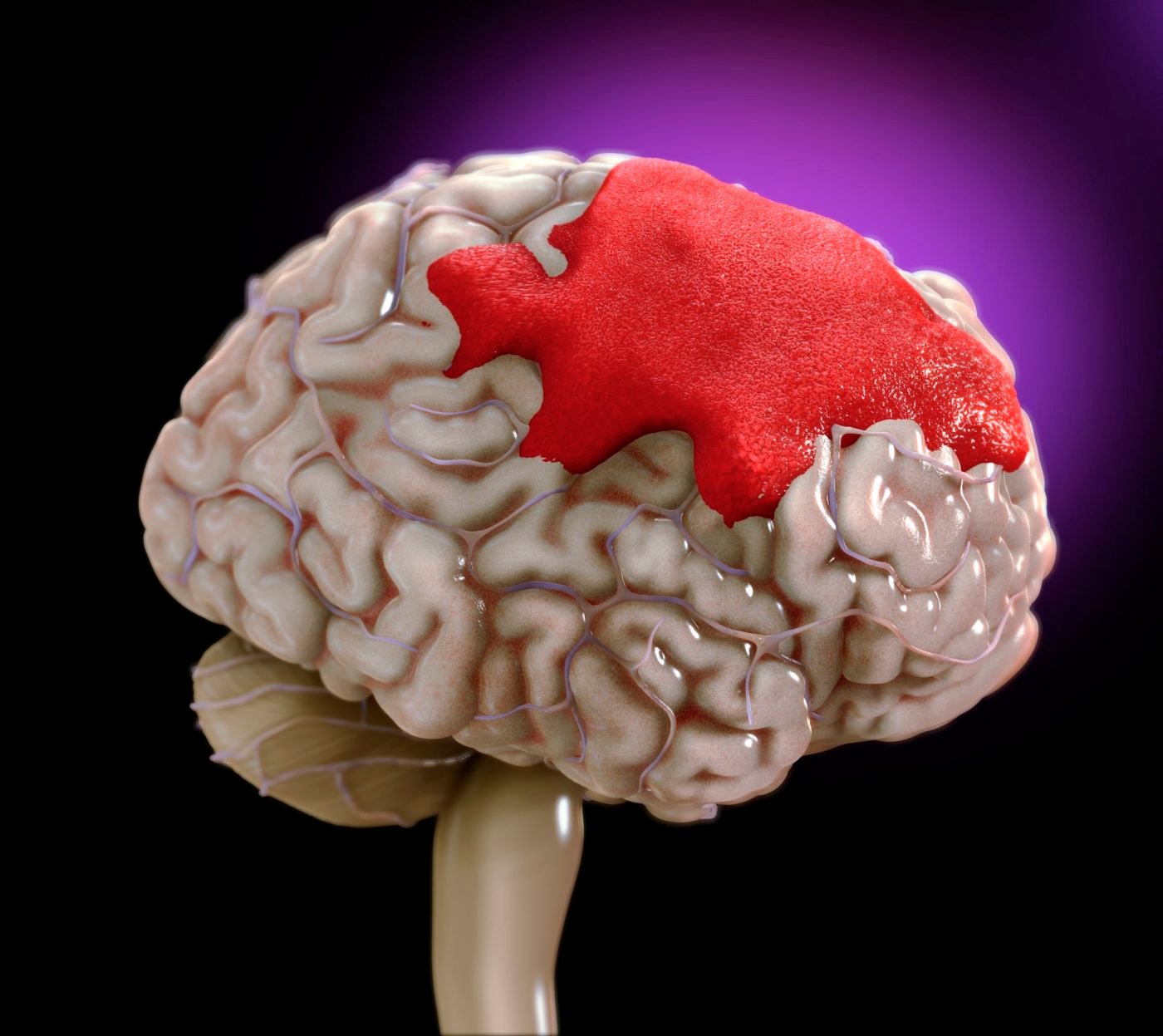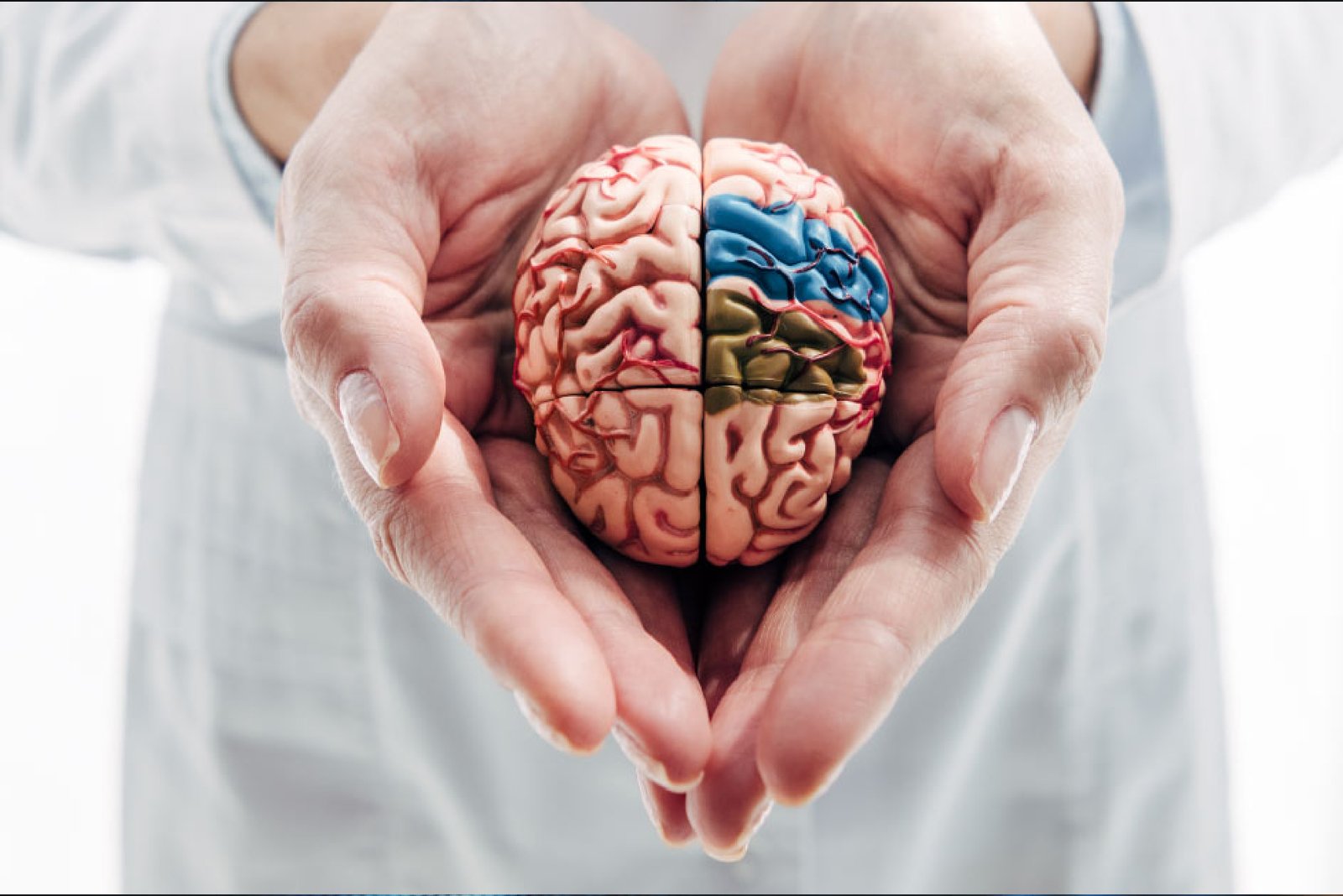Dr. Dilip S. Kiyawat, Leading Spine & Neurosurgeon in the Field of OSTEOPOROTIC VERTEBRAL COLLAPSE
OSTEOPOROTIC VERTEBRAL COLLAPSE
Osteoporotic vertebral collapse occurs when the vertebral bones in the spine become weakened and porous due to osteoporosis, a condition characterized by low bone density. This can lead to compression fractures in the vertebrae, resulting in pain, loss of height, and a stooped or hunched posture. Osteoporosis causes bones to thin and become more brittle and weak. The thinning bones can collapse during normal activity, leading to a spinal fracture. These compression fractures can cause a great deal of pain and can permanently alter the shape and strength of the spine.
OVCF can cause severe back pain so much that the patient is
unable to sit or even move in the bed.
Diagnosis involves imaging studies
like X-ray, CT scan & MRI.
Treatment: Treatment aims to alleviate pain, restore spinal height, and
prevent further fractures and deformities like kyphosis. Conservative
approaches may include bed rest, pain management, bracing, and physical
therapy. In severe cases, surgical interventions such as vertebroplasty or
kyphoplasty, involving the injection of bone cement into the fractured
vertebra, may be recommended. Preventive measures like lifestyle
modifications, stopping smoking, calcium and vitamin D supplementation,
and medications targeting bone health are crucial for managing
osteoporosis and reducing the risk of OVCF.
Causes
The primary cause of osteoporotic vertebral collapse is osteoporosis, a condition where bones become brittle and prone to fractures due to a decrease in bone mass.
Symptoms
Back Pain Sudden, severe back pain may occur, often localized to the affected vertebra.
Treatment
Medications Nonsteroidal anti-inflammatory drugs (NSAIDs) or analgesics may be prescribed for pain relief. Supplements such as Calcium Vitamin D & Injection Of Parathormone are given for a long time.
Rehabilitation
Designed to strengthen the core muscles, improve posture, and enhance flexibility.
OSTEOPOROTIC VERTEBRAL COLLAPSE
Loss of Height
Vertebral compression fractures can lead to a gradual loss of height.
Medication for Osteoporosis
Drugs like alendronate, risedronate, or zoledronic acid can help in preventing further bone loss.
Change in Posture
A stooped or hunched posture, known as kyphosis, may develop.
Osteoporosis Management
Regular Monitoring Bone density testing as recommended by healthcare professionals.
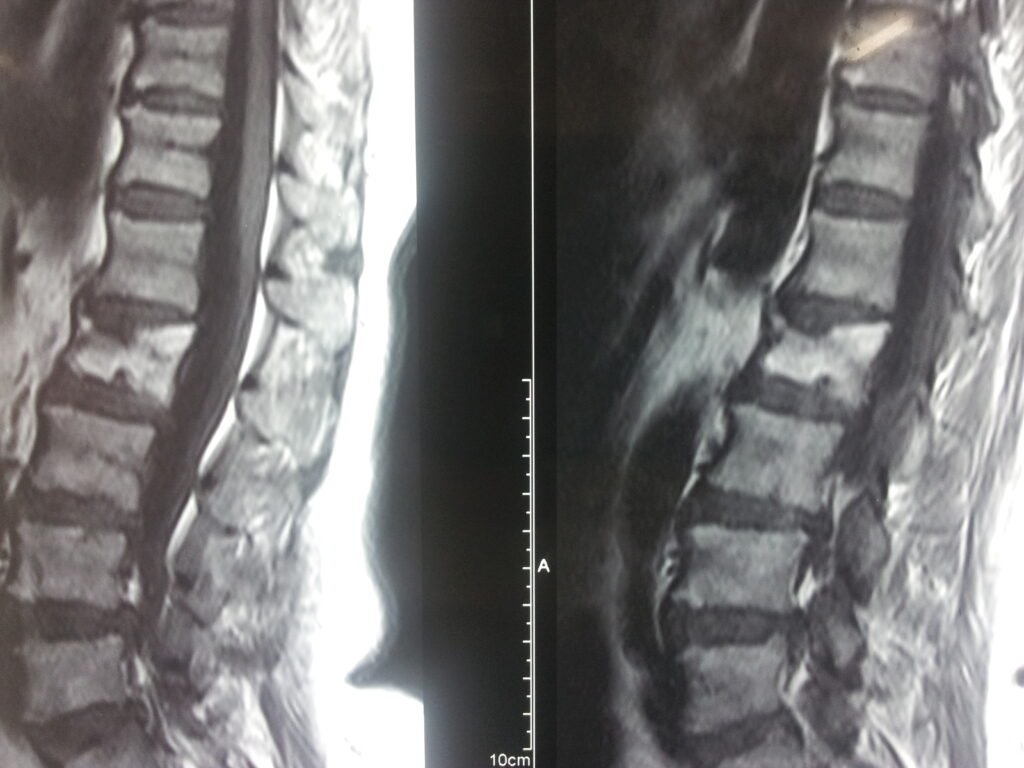
MRI showing Osteoporotic vertebral collapse of L-2
